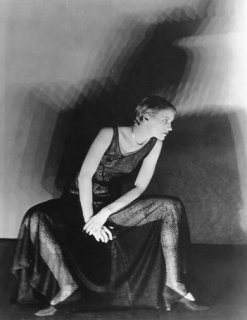vogue.com
Countless models have had their careers promoted in the pages of Condé Nast magazines. Far fewer can claim to have been discovered by the company's founder and namesake himself. But the day in 1927 that Mr. Nast pulled the 20-year-old Lee Miller from the path of an oncoming car, her career took off. The blond, blue-eyed Valkyrie from Poughkeepsie, N.Y., was photographed for Vogue by Edward Steichen, who in turn wrote her a letter of introduction to Man Ray, with whom she would study and have a tempestuous affair. The artist wasn't her only famous lover; Charlie Chaplin, too, is rumored to be on the list. While Miller was in Paris, Jean Cocteau cast her as an armless statue in his movie Le Sang d'un Poète, Pablo Picasso painted her several times (she, in turn, took several photographs of him), and a glass manufacturer cast a champagne goblet from her breast.
Her allure was captured in the words of the photojournalist John Phillips, who called her "an American free spirit wrapped in the body of a Greek goddess." And in fact, she was a woman of as much substance as style. In London at the outbreak of World War II, she ignored evacuation orders to photograph the times for Vogue. As a correspondent for the U.S. Army, she shot the siege of Saint-Malo and the liberations of Buchenwald, Dachau, and Paris. After the war, she gradually abandoned her camera for a rural life in East Sussex, England, as the wife of artist and biographer Sir Roland Penrose. But her exploits live on in Carolyn Burke's new biography, Lee Miller: A Life (Knopf, $35).

 )
)
 !
!